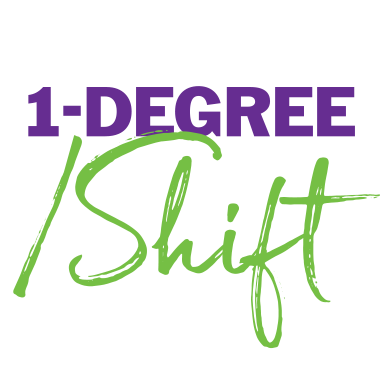It’s been over thirty years since the start of the great expansion of corporate diversity practices. Today, with decades of learning under our belts, some of the most well-respected thought leaders in diversity from business and academia are telling us what they’ve learned.
Here are seven things we’ve identified that every CEO and Diversity leader should consider.
1. Traditional DEI doesn’t work.
“Stop Teaching Diversity 101” is a surprisingly common mantra. Why? Because ‘traditional’ Diversity Equity and Inclusion (DEI) was a good start, but it hasn’t worked. It failed to deliver on its two original aspirations – increased senior management diversity and decreased discrimination claims. In fact, there is strong evidence to suggest that the old diversity template can do more harm than good.
A study by the Harvard Business Review showed that standard diversity programs actually tend to make organizations less diverse. They can increase resentment and bias, lead to ‘othering’ of people from traditionally marginalized groups and set them up to look like low contributors. By its very nature, traditional corporate diversity programs often exclude anyone outside of historically marginalized groups from the diversity conversation (particularly white men!) and you need everyone in the conversation for there to be honest inclusion.
2. It’s Inclusion & Diversity, not Diversity & Inclusion
Regarding inclusion, people like to say, “you can’t just invite people to the party [diversity], you have to ask them to dance.”
True, but we now understand that inclusion is even richer than that. Being included means knowing you are valued for the uniqueness you bring, and that you have an equal voice in decisions about direction and how resources are allocated.
Inclusion is about more than dancing. It invites you onto the planning committee because your involvement makes for a better party. It gives you a say in decisions on venue, food, music and invitees. It ensures that everybody invited is also welcomed. An inclusive environment is essential to the success of a diversity initiative.
3. Inclusion is the high-performance opportunity
Every few years a popular management guru looks around and identifies a powerful lever that CEOs should pull to impact performance (remember the days of “management by walking around”). You have to buy the book, but you usually get the idea in the first chapter.
Today, organizations like McKinsey & Company have saved us a read by statistically tracking and verifying what many suspected all along: inclusion unleashes high performance. Diverse teams drastically outperform homogeneous teams. Further, companies with inclusive and diverse senior management teams financially outperform their peers by 36%, a gap that grows every year, especially in the financial services, health care, and technology industries. (McKinsey & Company)
Inclusion drives many other key performance metrics including innovation, employee engagement, well-being, and psychological meaning, safety and availability.
It makes sense. No single leader or group of MBAs from the same regional university can possibly produce the diversity of thought, experience and perspective required to successfully compete in our fast-changing, competitive global economy.
4. Inclusion is strategic and must be CEO-led
Inclusion enables ‘honest diversity’, which drives performance. Because of this, inclusion must be CEO-led and viewed strategically, not as a compliance effort led by HR. This executive focus properly realigns ‘DEI’ to ‘I&D’.
When the CEO takes ownership of inclusion, all employees are invited into the inclusion and diversity conversation.
5. Inclusion is about addressing in-group/out-group dynamics
I find it fascinating to ask people “Is there an ‘in-crowd’ in your workgroup?” It’s amazing how many people quickly answer “yes”. It’s the playground all over again. They see and feel it, can describe it, can tell you who is ‘in’ and who is ‘out’, and they’ve accepted it as an operational reality.
We shouldn’t be surprised. Human nature has its inherent polar forces including bias and privilege that drive people into distinct camps. Often this workplace separation is based on areas of historical discrimination including gender and cultural background, but at times the distinctions are more insidious. ‘The people who own shares’, ‘the guys who play hockey’, ‘the long-time employees’ or ‘the ones who work at head office’. Those outside the in-crowd are fully aware of what is going on. Those on the ‘ins’ may be aware but are unperturbed. Often the group leader is the most oblivious to the divide, even though he/she is most likely and unconsciously both the definer and the leader of the ‘in-crowd’.
6. Inclusion is fostered through workgroup norms and behaviours
The employee inclusion experience doesn’t come from hearing corporate policy. It comes from how employees experience the interpretation of those policies in their workgroup, and through their relationships with their coworkers and immediate supervisor. Team leaders must continually view their workgroup through the lens of inclusion and take consistent and deliberate actions to promote fairness and cohesiveness.
Key actions include increasing workgroup understanding of the nature and value of inclusion; collaboratively developing inclusive norms and behaviours (an inclusion charter helps); and training managers on how to recognize bias and micro aggressions, facilitate inclusive conversations, and promote micro-affirmations.
7. Ready, set, go!
While the organization-wide DEI program can be a beast to launch, you can embark on an inclusion journey rather easily. Inclusion is the foundation on which a successful DEI program is build. Inclusion is the missing element that can take your existing diversity effort over the finish line.
Where should you start? Three powerful potential options are the Executive Leadership team, the DEI Employee Resource Group, and that lingering, open discrimination wound that everyone knows about and that directly affects a significant diagonal slice of your organization.
Starting with the Executive Leadership Team establishes CEO leadership of the initiative, offers immediate impact on innovation and decision making, produces strong inclusion ambassadors, and demonstrates to the entire organization that inclusion is a core value.
Starting your inclusion initiative with the existing DEI Employee Resource Group (ERG) heads off a common, consequential mistake many make when launching diversity initiatives. They form a DEI ERG but place too much emphasis on using it as a stretch assignment for ‘high potential’ senior managers. The DEI ERG leadership team is stocked with ‘Hi-Pos’ – a baked-in in-crowd. The group is then rounded out with employees representing historically marginalized groups. The newer members quickly recognize the dynamic, see the entire effort as performative and become powerful anti-ambassadors of the DEI effort. Building inclusiveness into your DEI ERG from the beginning – or even midstream – sidesteps this land mine and ensures a strong foundation for your I&D efforts.
The wisdom and rationale for starting with a workgroup struggling under institutional discrimination speaks for itself. It is compassionate, fair and good for the entire organization.
The wisdom and rationale for starting with a workgroup struggling under institutional discrimination speaks for itself. It is compassionate, fair and good for the entire organization.
Does your executive team, workgroup or organization have an ‘in-crowd’? If so, what effect does that have on other employees? Is there a performance penalty, or performance opportunity? What’s the impact on your diversity goals?
Start with an Inclusion Assessment survey on the target workgroup(s) to listen to all employees and model the outcome you hope to produce. You will likely be surprised by what you hear, and the obvious opportunities that emerge to improve the workgroup climate. From there, with intention and courage, your organization’s journey to inclusion will catch fire and spread.
Andrew Williams, Inclusion and Diversity Lead
1-DEGREE/Shift
“We unleash high performance through inclusion.”


